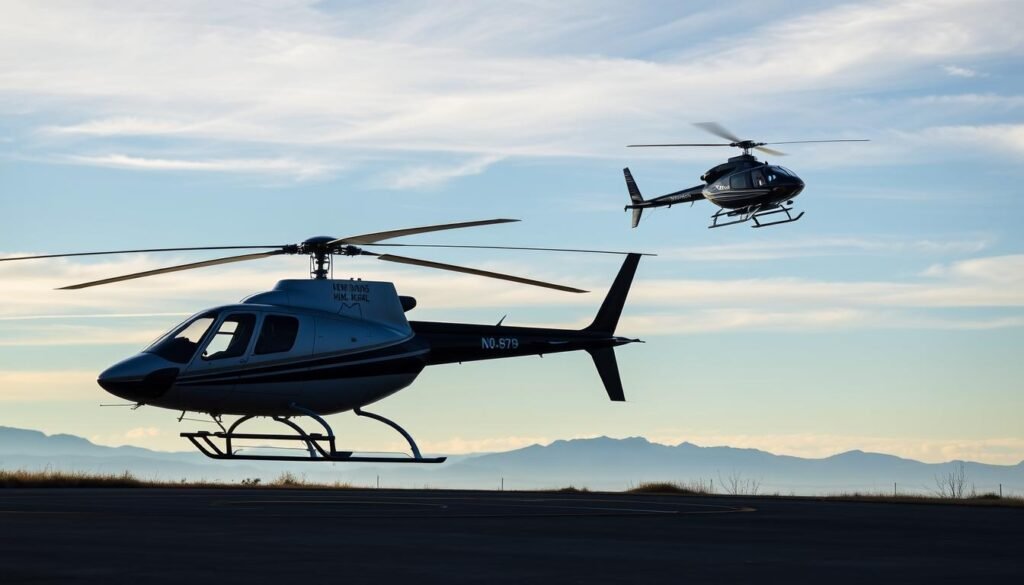One in six rescue flights in the U.S. faces conditions that force an emergency landing or major repair, highlighting the importance of SAR helicopter pilot insurance.
This guide explains why specialized protection matters to crews, aircraft owners, and companies that run rescue operations. It clarifies core elements like hull (physical damage), liability (third-party harm), and passenger protection so teams can keep missions moving after an incident.
Readers will learn how pricing ties to aircraft type, pilot experience, mission profile, and location. The piece also contrasts aviation plans with travel insurance, showing why evacuation and medical clauses differ from trip-based policies.
Practical advice points to choosing a carrier and structuring a policy that preserves mission continuity, protects people, and aligns with operational realities. For deeper policy details and examples, see this practical resource at helicopter insurance solutions.
Key Takeaways
- Specialized protection is critical for rescue teams operating in remote or austere settings.
- Core policy parts include hull, liability, and passenger elements that protect assets and people.
- Pricing reflects aircraft model, crew training, use type, and past claims history.
- Aviation plans differ from travel insurance in evacuation and medical response terms.
- Working with an experienced company and underwriter speeds claims and mission recovery.
What SAR Helicopter Pilot Insurance Covers And Who Needs It
When flights enter remote, night, or mountainous environments, standard plans often leave gaps.
Operators, crews, and contracted teams that run search rescue sorties require tailored protection. These parties face unique risks like hoist operations, night work, and third‑party exposures that regular plans do not address.
Who Typically Needs Coverage: Pilots, Crews, And Operators On High-Risk Missions
Pilots and hoist-capable crews, NGO contractors, and public agency operators should evaluate operational policies. Experience, recurrent training, and dispatch practices shape underwriting and the policy terms.
Core Protections For Search And Rescue, Emergency, And Rescue Operations
Core parts include aircraft hull, liability to third parties, and passenger protection. Emergency parameters — night, IMC, and rough terrain — often trigger services like rapid repair, legal defense, and ground support under a policy.
How Specialized Aviation Insurance Differs From Standard Travel Insurance
Travel insurance often includes search rescue benefits that reimburse an organized rescue once per trip, typically within a $10,000–$50,000 limit. By contrast, specialized aviation plans protect the aircraft and ongoing operations and may address mission liabilities and repair costs.
- Vet policy language to avoid gaps between operational and trip definitions.
- Expect exclusions for certain activities or sports unless endorsed.
- Costs and underwriter appetite vary by flight logs and mission profile.
| Benefit | Specialized Aviation Policy | Travel Insurance Search Rescue |
|---|---|---|
| Primary Purpose | Protect aircraft, operations, and third parties | Reimburse search expenses for a traveler |
| Typical Limits | Varies by underwriter; often high for hull and liability | $10,000–$50,000 per organized rescue |
| Activation | Based on mission, logs, and operator obligations | Requires formal report and credible trip details |
| Evacuation | May include larger evacuation benefits | Separate medical evacuation limits apply (often larger) |
SAR Helicopter Pilot Insurance: Coverage For High-Risk Missions
Operational teams need policies that address aircraft damage, third‑party risk, and onboard medical claims tied to urgent search work.

Aircraft Hull Insurance Coverage For Damage And Loss
Hull protection handles crashes, fire, theft, and ground risks. It also covers hard landings, FOD on unimproved LZs, and post‑rescue transport incidents.
Operators should confirm endorsements for hoists, NVGs, and spare parts so specialized gear is part of the insurance cover.
Liability Insurance Coverage For Third-Party Bodily Injury And Property Damage
Liability pays claims tied to third‑party injury and property damage from low‑altitude work, rotor wash, or confined‑area approaches. Legal defense and settlement costs are typically included.
Passenger Coverage For Medical Expenses And Onboard Incidents
Passenger medical limits reimburse crew, mission specialists, and authorized ride‑alongs for onboard treatment and transport expenses. Itemized receipts and authority reports support claims.
Mission Add-Ons: Search And Rescue Benefits Versus Medical Evacuation
Dedicated search rescue benefits in travel plans often fund a single organized rescue with amounts around $10,000–$50,000. By contrast, medical evacuation limits can reach $2,000,000 and may include advance payments to authorities.
| Aspect | Typical Limit | Operational Note |
|---|---|---|
| Search Rescue Benefit | $10,000–$50,000 | Often single‑rescue cap; plan layers recommended |
| Medical Evacuation | Up to $2,000,000 | May include rapid advance payments to authorities |
| Hull & Onboard Equipment | Varies by policy | Endorse hoists/NVGs to avoid gaps |
Costs And Pricing Factors For SAR And Aviation Policies
Premiums shift significantly with the make and model of the aircraft and how it is used. Underwriters expect detailed data on equipment, sorties, and maintenance to price risk accurately.

How Helicopter Type, Pilot Experience, Missions, And Location Influence Costs
The hull value, advanced avionics, and safety systems on platforms like the Airbus H145 or Leonardo AW169 affect prices. Readily available parts and proven reliability can lower rates, while rare airframes may raise them.
Pilot experience, type ratings, and recurrent training build confidence with underwriters. Strong training records and clear SOPs are a direct way to moderate premiums and improve terms.
Operational Risk, Weather, And Claim History As Premium Drivers
Declared activities such as hoist profiles, night operations, and maritime flight increase risk and push costs up. Geography matters too: mountainous or remote locations and busy airspace change loss expectations.
Weather exposure — IMC, icing, and seasonal storms — along with a company’s claims history, also shape renewal prices. Operators can reduce cost pressure by improving SMS, documenting maintenance, and benchmarking rates with brokers. For technical background on operational risk, see this study and compare training cost data to plan submissions.
operational risk study • training cost comparison
Eligibility, Exclusions, And Limits To Know Before You Fly
Activation of search rescue benefits depends on formal reports and precise location details submitted to the proper authority. An authority must deem the incident a valid emergency before benefits apply.
Formal Report And Credible Details Required
An official report with a verifiable case number is the starting point. The report should include exact coordinates, the nature of distress, and the time of the event.
Radio logs, GPS tracks, and authority communications are essential. Number references and agency IDs on mission forms speed claim handling.
Common Exclusions: High-Risk Activities, Voluntary Actions, Fines, And Penalties
Policies often deny reimbursement when people take part in extreme sports or act recklessly. Examples include heli-skiing and base jumping.
Voluntary hiding, trespass, and deliberate reckless conduct can void a claim. Personal fines and penalties are typically not paid.
Coverage Limits: Single Organized Rescue, Duration Caps, And State-Level Charges
Most plans allow one organized rescue per trip with a duration cap of about 4–6 days. Longer operations may not be funded.
Some U.S. states (California, Idaho, Maine, New Hampshire, Oregon, Utah) may bill rescued people. Itemized receipts and authority documentation are required to process claims.
- Activation: Official report + case number required.
- Documentation: Keep radio logs, GPS, and mission communications.
- Limits: One organized rescue per trip; duration caps apply.
| Aspect | Typical Rule | Action |
|---|---|---|
| Activation | Formal agency report | File immediately; record case ID |
| Exclusions | Certain sports and deliberate acts | Review policy language |
| State Charges | Possible billing in listed states | Retain itemized receipts |
Practical Tip: Add a preflight checklist that matches declared policy limits and align trip paperwork to avoid gaps between aviation and travel insurance products.
Comparing Insurance Providers, Policies, And Services
A clear comparison helps operators match plan features to real mission needs. The buyer should weigh limits, payment speed, and the provider’s long‑term stability when evaluating options.

Evaluating Coverage Limits, Advanced Payment Options, And Company Stability
Compare limits that cover hull and liability exposures alongside any supplemental search rescue benefits. Confirm whether search limits include single organized rescues and the usual $10,000–$50,000 caps versus larger medical evacuation limits.
Confirm advanced payment capability. Some travel insurance firms can advance funds to authorities. That capability can prevent launch delays when a rescue requires urgent funding.
Assess the company’s balance sheet, reinsurance program, and claims ratios. A stable firm is likelier to respond over multi‑year programs and absorb large evacuation costs.
- Check 24/7 claims intake and aviation‑literate adjusters.
- Verify endorsements, definitions, and exclusions that affect real operations.
- Get indicative prices from multiple providers and align plan limits with night, IMC, and hoist work.
Practical tip: Choose a provider with proven agency and hospital relationships and explicit language that protects specialized equipment. This ensures timely rescue support and smoother post‑incident recovery across the country.
How To Buy, Document, And Claim Coverage Today
Start by matching plan limits to the mission profile, destinations, and likely activities. A buyer who aligns policy language to real trip tasks reduces surprises when a search or rescue is needed.

Buyer’s Checklist: Policy Fit, Exclusions, Destinations, And Activities
Verify exclusions, the search rescue amount, duration caps (often 4–6 days), and whether the provider can advance funds to authorities.
- Confirm trip and travel insurance language that applies to travelers and non‑crew passengers.
- Match limits to likely evacuation and medical care needs; note $2,000,000 medical evacuation ceilings may differ.
- Review state billing risks (CA, ID, ME, NH, OR, UT) and required receipts.
Claims Readiness: Itemized Receipts, Authority Documentation, And Timely Reporting
Build templates for itemized expenses, authority contacts, and mission numbers before flights.
- Capture radio logs, EFB tracks, and tracking-device data to support timely reporting.
- Keep agency case numbers, hospital contacts, and vendor receipts handy to speed claims.
- Run periodic drills so travelers and crews know what documentation to gather on scene.
“A brief, accurate report to the activating authority is the single most important step to secure rescue benefits.”
| Action | What To Capture | Why It Matters |
|---|---|---|
| File Official Report | Case number, coordinates | Activates search rescue eligibility |
| Collect Receipts | Itemized bills from agencies | Proves expenses and speeds reimbursement |
| Confirm Advanced Payment | Provider promise in policy | Prevents launch delays when authorities need funds |
Conclusion
Clear activation rules, fast advance payments, and disciplined documentation keep operations resilient after an event.
Search rescue benefits normally fund a single organized rescue with set caps and require an official activation and itemized receipts to validate claims.
Operators should align hull, liability, and passenger protections with medical evacuation limits, which often trigger different payment paths and higher ceilings.
Compare providers on limits, advance payment ability, and financial stability. Maintain training, a robust SMS, and targeted equipment investments to lower risk and cost.
Review policies regularly as aircraft, operations, and regulations change to keep protection matched to real-world missions and search realities.
FAQ
Who typically needs specialized aviation protection for search and rescue and emergency operations?
Operators of rotary-wing aircraft, crew members, flight surgeons, and air ambulance providers who undertake recovery, medevac, or other high-risk tasks usually require this specialized plan. Companies that coordinate remote expeditions, government rescue units, and private contractors involved in alpine, maritime, or disaster response also benefit from tailored terms that address mission-specific risks and regulatory obligations.
What core protections should a mission-focused policy include?
A robust plan combines hull protection for physical loss, liability coverage for third-party injury and property damage, and passenger medical benefits. It often adds search-and-rescue enhancements, emergency repatriation, and legal defense costs. Look for explicit wording on mission types covered, crew qualifications, and on-scene medical expenses.
How does specialized aviation protection differ from standard travel plans?
Travel policies typically exclude organized rescue operations and commercial aviation activities. Mission-focused products cover operational exposures, professional crew actions, and aircraft-specific perils. They also handle larger limits, tailored deductibles, and endorsements for hazardous environments that consumer travel insurance will deny.
What does hull insurance pay for in the event of damage or total loss?
Hull protection reimburses repair costs or actual cash value for destroyed aircraft, subject to policy limits and deductibles. It can include on-ground and in-flight damage, theft, and hull replacement clauses when agreed upon. Operators should confirm agreed value schedules and salvage rights.
How does liability protection work for third-party injury and property damage?
Liability terms cover legal defense and settlements when operations cause bodily injury or property harm. Limits are set per occurrence and aggregate; higher-risk missions typically require larger limits. Policies often extend to contractors and ground crews when specifically named or endorsed.
Are passengers covered for medical expenses from onboard incidents?
Yes, passenger medical benefits reimburse emergency treatment, evacuation costs, and sometimes ongoing care resulting from onboard incidents. Coverage depends on passenger lists, manifest accuracy, and whether flights are chartered or commercial. Preexisting condition clauses and reimbursement caps apply.
What mission add-ons should teams consider, like search benefits versus medevac?
Valuable endorsements include specialized search benefits, additional evacuation limits, and crisis-response services. Search benefits may reimburse organized asset deployment costs, while medevac add-ons focus on expedited transport and international repatriation. Confirm how the policy defines activation and eligible expenses.
Which factors most influence premiums and overall costs?
Aircraft make and model, year, and maintenance history strongly affect premiums. Pilot experience, number of flight hours, accident records, mission type, geography, and typical operating environments (coastal, mountainous, offshore) also drive pricing. Insurers assess operational manuals and safety procedures during underwriting.
How do weather, operational risk, and claims history impact pricing?
Frequent severe-weather exposure, night operations, and missions in remote or hostile regions raise perceived risk and increase rates. A history of frequent claims or severe incidents prompts higher premiums or restrictive endorsements. Conversely, strong safety management and low claim frequency can yield discounts.
What documentation is required to activate a search or rescue claim?
Insurers commonly require an official incident report, flight logs, maintenance records, crew qualifications, passenger manifests, and any government or authority activation notices. Itemized invoices for expenses and witness statements help support claims. Timely reporting is essential to avoid denial.
What are typical exclusions that operators should watch for?
Policies frequently exclude deliberate unlawful acts, voluntary participation in extreme sports without endorsement, fines and penalties, nuclear or war-related incidents, and unauthorized flights. Exclusions for unapproved modifications, noncompliance with maintenance schedules, and unlisted pilots are common.
How are coverage limits and duration caps applied during an organized rescue?
Limits are set per event and may include sublimits for search costs, per-person medical payouts, and maximum operational duration. Insurers may cap daily or total mission expenses. Operators should negotiate limits that reflect likely mission scale and potential state-level fees for prolonged deployments.
How should teams evaluate providers and policy wording?
Compare insurer financial strength, claims handling reputation, and specialist experience in aviation and emergency response. Review endorsements, exclusions, sublimits, and advance payment options for costly deployments. Seek brokers familiar with international operations and regulatory nuances.
What should a buyer’s checklist include before purchasing a policy?
Confirm mission definitions, covered activities, pilot and crew eligibility, aircraft listings, territorial limits, evacuation and repatriation terms, and policy deductibles. Verify emergency assistance services, advance payment clauses, and whether subcontractors or volunteer responders are covered.
How can teams prepare for claims to ensure prompt payment?
Maintain complete maintenance logs, crew records, and manifests. Secure official authority notifications, itemized receipts, medical reports, and photographic evidence. Report incidents immediately, follow insurer instructions, and preserve evidence to support timely adjudication.
Where can operators find reputable providers and comparison tools?
Major specialty underwriters like AIG, Allianz Global Corporate & Specialty, and Lloyd’s syndicates offer tailored products. Aviation-focused brokers such as Lockton, Marsh, and Aon provide comparisons and bespoke program design. Use broker networks to obtain multiple quotes and policy audits.



